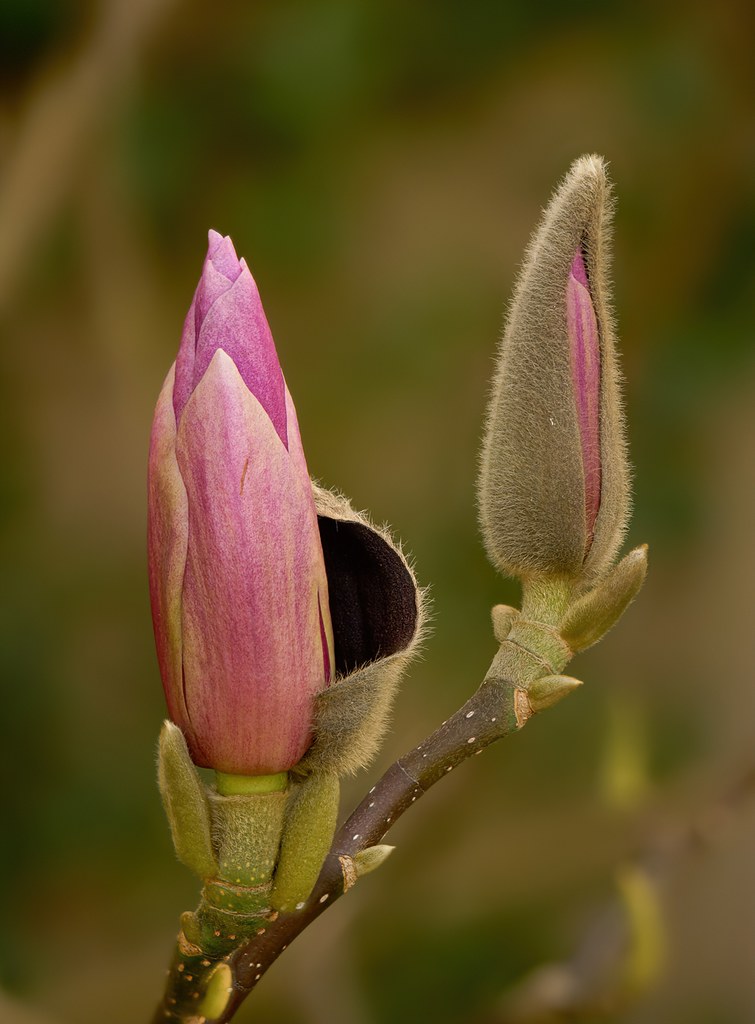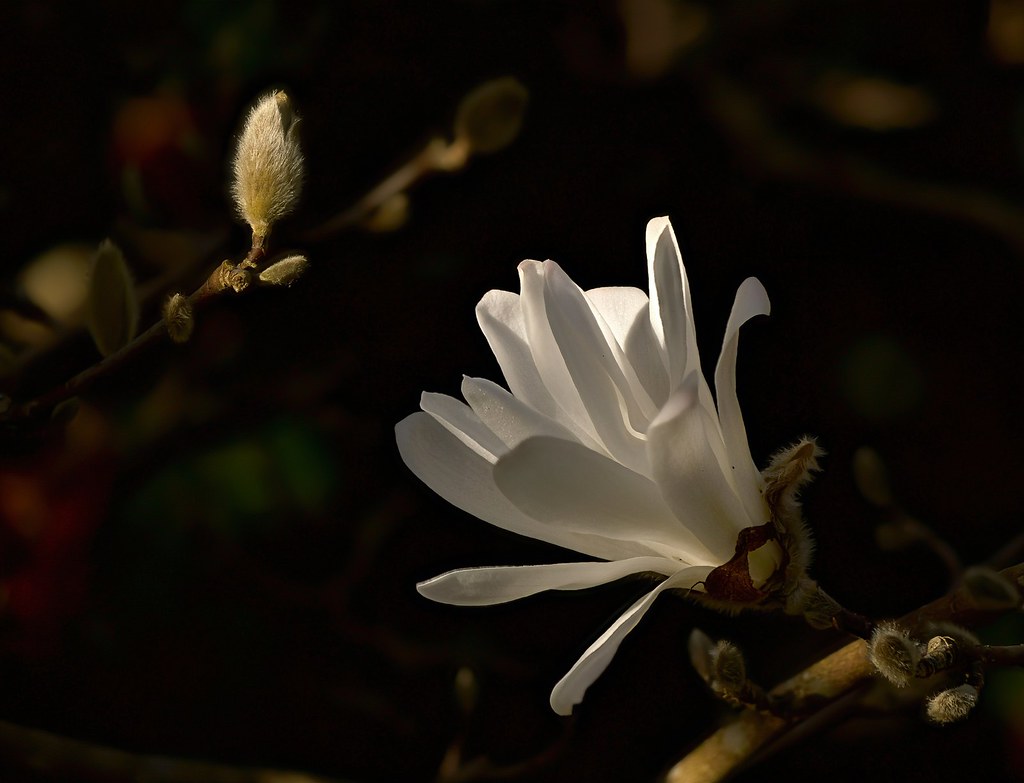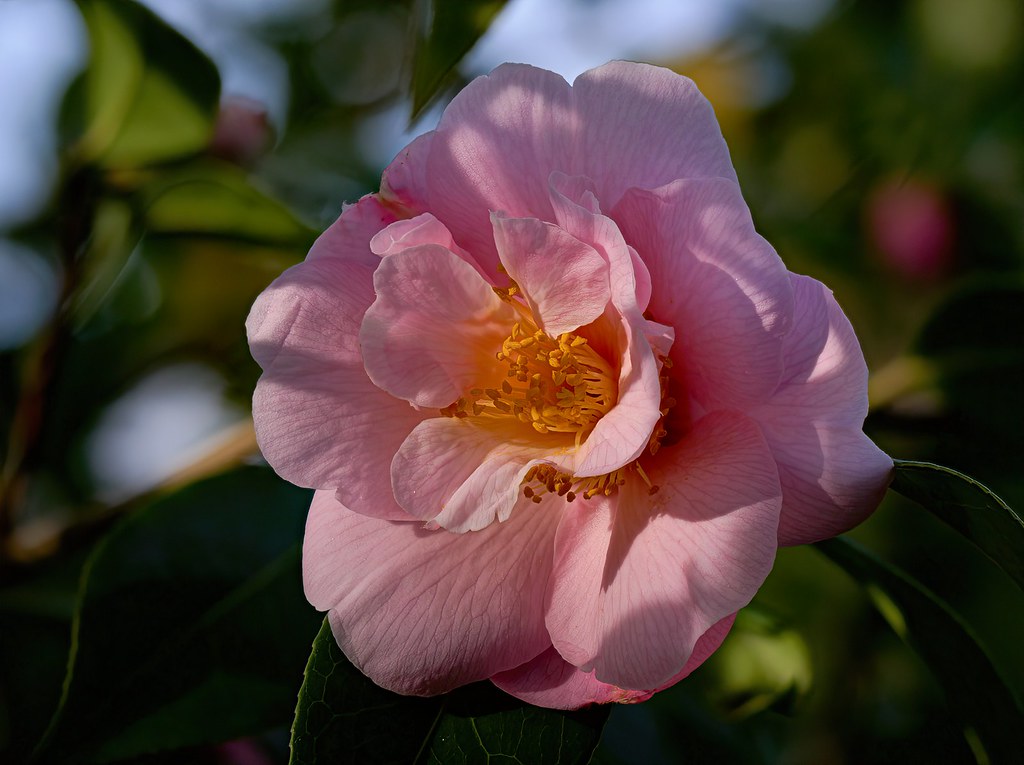Superb images, I like your processing, especially on the flowers.
Thanks.
Could you elaborate on how the A7II lacks the flexibility of the m4/3 kit?
Several things come to mind: Aperture bracketing; Video stacking; Portrait orientation; Customisation; Joystick; Weight.
I'll refer to my current preferred kit for flowers etc, a Panasonic G9 with an Olympus 60mm macro lens. No flash, because I use natural light for flowers etc.
Aperture bracketing
In my flower images I like where possible to have a pleasing (to my eye) balance between the extent to which the subject is in focus and rendition of the background. One of the factors in this is aperture. I could chimp captured images to see how they look and then try again with a different aperture if I thought I might get a better balance. But this is time-consuming and disrupts the flow of a session, and in any case trying to sort out what is best on the fly, on a tiny screen which I may not be able to see very well because of bright ambient light has the potential to be both frustrating and error-prone. So I use aperture bracketing to capture a series of images from f/2.8 to f/22 with a single press of the shutter button. I have the G9 set up so that it looks after the ISO and shutter speed - it uses base ISO until the shutter speed drops to 1/80 sec, at which point it starts raising the ISO. If it reaches ISO 3200 it then starts slowing the shutter speed. I end up with sequences of images like the one below. I can then look at the images at a decent size, taking as long as I want over it, and choose which if any of them I want to use. (I generally capture several such sequences for each framing of each subject. This increases the chance of a usable result where the look I like was captured with a slow shutter speed. Where the scene illumination is varying, for example with sunlight coming through moving foliage, the repeated shots let me choose between play of light effects for a particular framing.
 1529 4 1521 43 Aperture bracket sequence, F2point8 to F22
1529 4 1521 43 Aperture bracket sequence, F2point8 to F22 by
gardenersassistant, on Flickr
The A7ii does not provide aperture bracketing.
Video stacking
Depending on my mood, on the ambient conditions especially the amount of breeze, and on the scene and subject, I may use aperture bracketing, or video stacking, or, most often, both, and decide during post processing which technique's result I like best.
For video stacking I capture what Panasonic terms "Post focus" videos. These are promoted as a way of deciding where you want the focus to fall after you have captured a scene. The camera captures a video as it pans from the nearest thing it can find to focus on to the furthest. It then shows you a few JPEGs extracted from the video and lets you choose which one(s) you want to keep. I don't use it like that though. I use the video, which in the case of the G9 is a 6K video, using almost the full pixel dimensions of the G9's 20 megapixel sensor. I use Helicon Focus to extract JPEGs from the video and stack them after I have chosen which of the extracted JPEGs to use.
This approach is easier and quicker than using focus bracketing. The capture is "point and shoot". Unlike with focus bracketing you don't have to make any decisions about how many images to capture and what spacing to have between them, and you don't have to arrange the focus so the sequence will start in the right place. The capture is relatively fast too, being done at 30 frames per second, as against 4.5 captures per second for stills. The speed of capture makes the technique more suitable for use hand-held (which is how I always work these days) and in breezy conditions (which are frequent where I live), and the short duration of each capture sequence makes it easier to do multiple captures (some work for stacking, some don't, so some repetition is good) while still moving quite fast from one subject to the next without feeling bogged down by a tedious capture procedure.
When working with video you are essentially using JPEG rather than raw, but the G9 provides a very flat "Cinelike D" profile which helps with dynamic range and highlights.
Video has an advantage in file handling and management as there is only one file per capture rather than many.
These are the sort of images I produce with video stacking.

1462 19 1457 05 2019_03_11 P1015812 G9+60 HHPFS32f F2.8 1-500 ISO400 EV-1 A29,2+innerC1 LR 1300h-sharpen by
gardenersassistant, on Flickr

1457 12 2019_03_11 P1015867 G9+60 HHPFS34f F2.8 1-2000 ISO100 EV-1.7 C1 LR 1300h-sharpen by
gardenersassistant, on Flickr
 1462 23 1459 08 2019_02_17 P1014688 G9+60 HHPFS20f F2.8 1-3200 ISO400 EV-1.3 C1 LR 1300h-sharpen
1462 23 1459 08 2019_02_17 P1014688 G9+60 HHPFS20f F2.8 1-3200 ISO400 EV-1.3 C1 LR 1300h-sharpen by
gardenersassistant, on Flickr
The A7ii does not provide focus-racked videos.
Portrait orientation; Customisation; Joystick; Weight.
I use portrait orientation a lot for flowers. The A7ii's tilting screen is not as good for working in portrait orientation as the G9's fully articulated screen. (I almost always use screen rather than viewfinder btw.)
The G9 is highly customisable. For example it has two very conveniently placed buttons on the front of the camera and I use one of these to initiate setting of the camera white balance using the grey panel of a ColorChecker Passport (I do this for each scene). The customisability of the auto ISO implementation I described above is another example.
I use autofocus a lot for stills, using a single small focus area. The G9's joystick makes it easy to move the focus area around, should I not want to use focus and compose (I sometimes prefer one method, sometimes the other.)
The A7ii itself is quite light, but the lenses I have for it that I could use for flowers are quite heavy. In contrast the G9 is heavier, but the Olympus 60mm macro is very small and light. Overall I find the G9 with 60mm macro very usable for individual captures (for example sometimes one-handed to reach into awkward positions), and usable for long sessions without feeling any strain in my hands or wrists. (The G9's excellent grip helps with this.)


























 1529 4 1521 43 Aperture bracket sequence, F2point8 to F22
1529 4 1521 43 Aperture bracket sequence, F2point8 to F22

 1462 23 1459 08 2019_02_17 P1014688 G9+60 HHPFS20f F2.8 1-3200 ISO400 EV-1.3 C1 LR 1300h-sharpen
1462 23 1459 08 2019_02_17 P1014688 G9+60 HHPFS20f F2.8 1-3200 ISO400 EV-1.3 C1 LR 1300h-sharpen